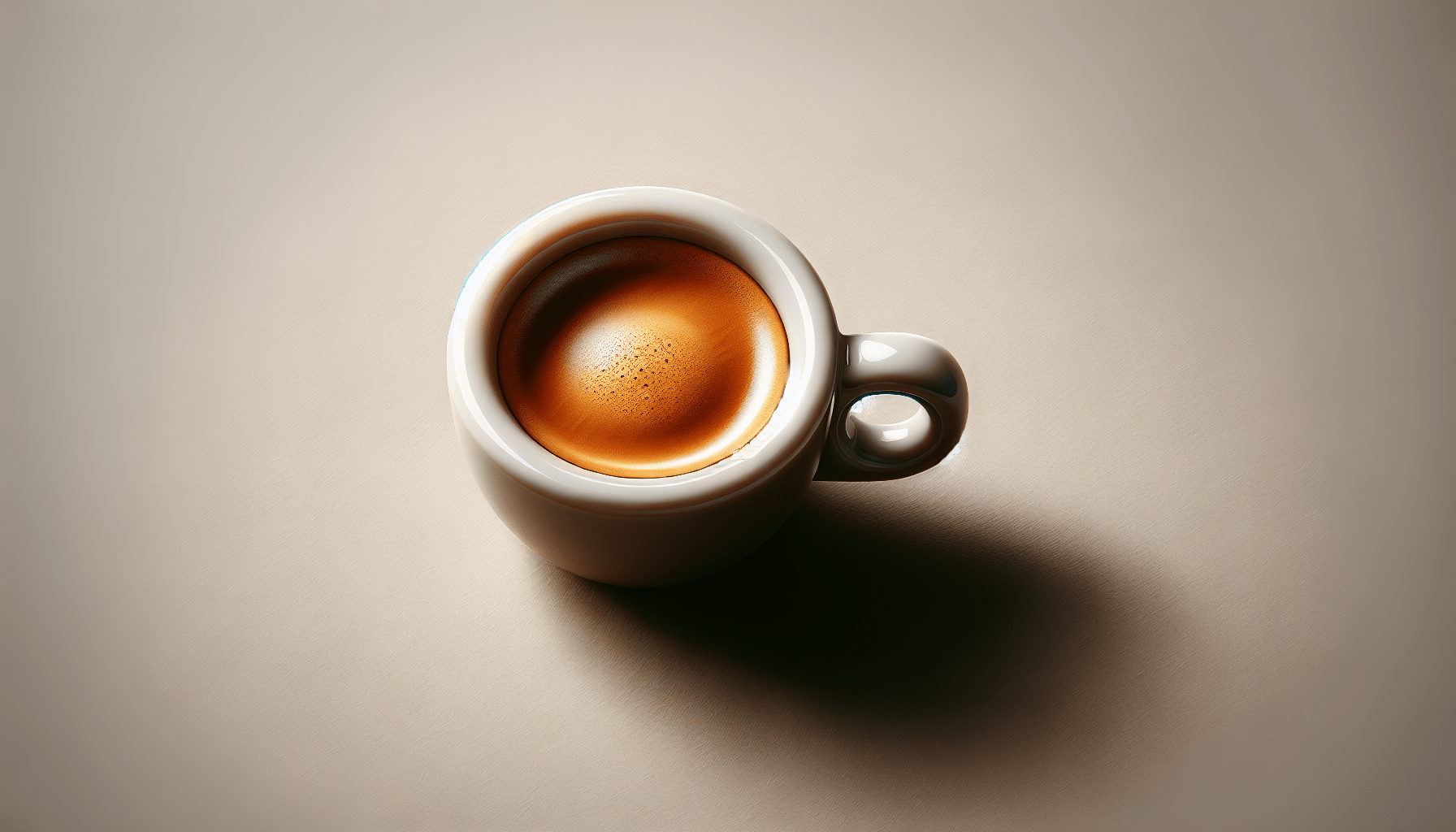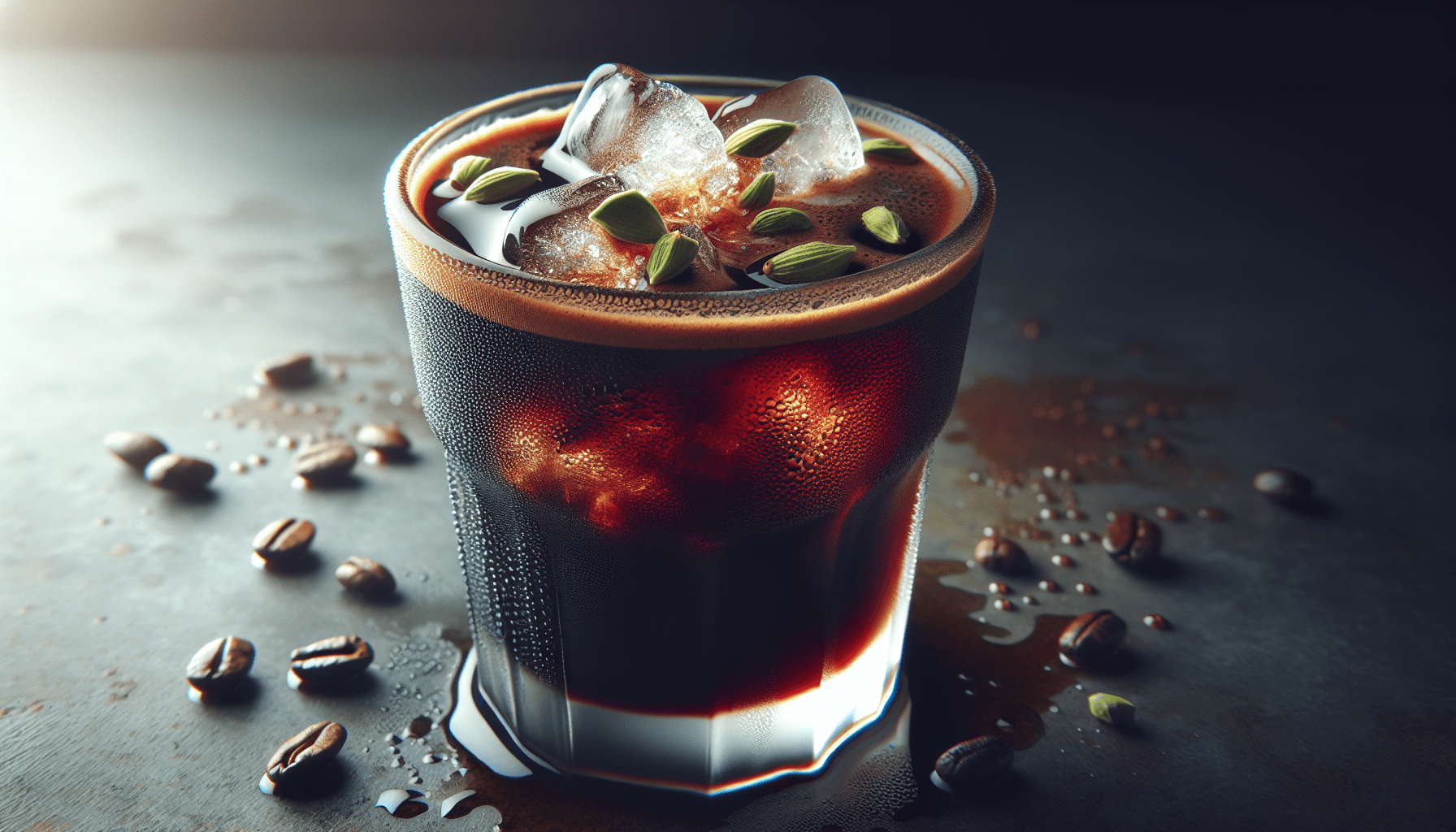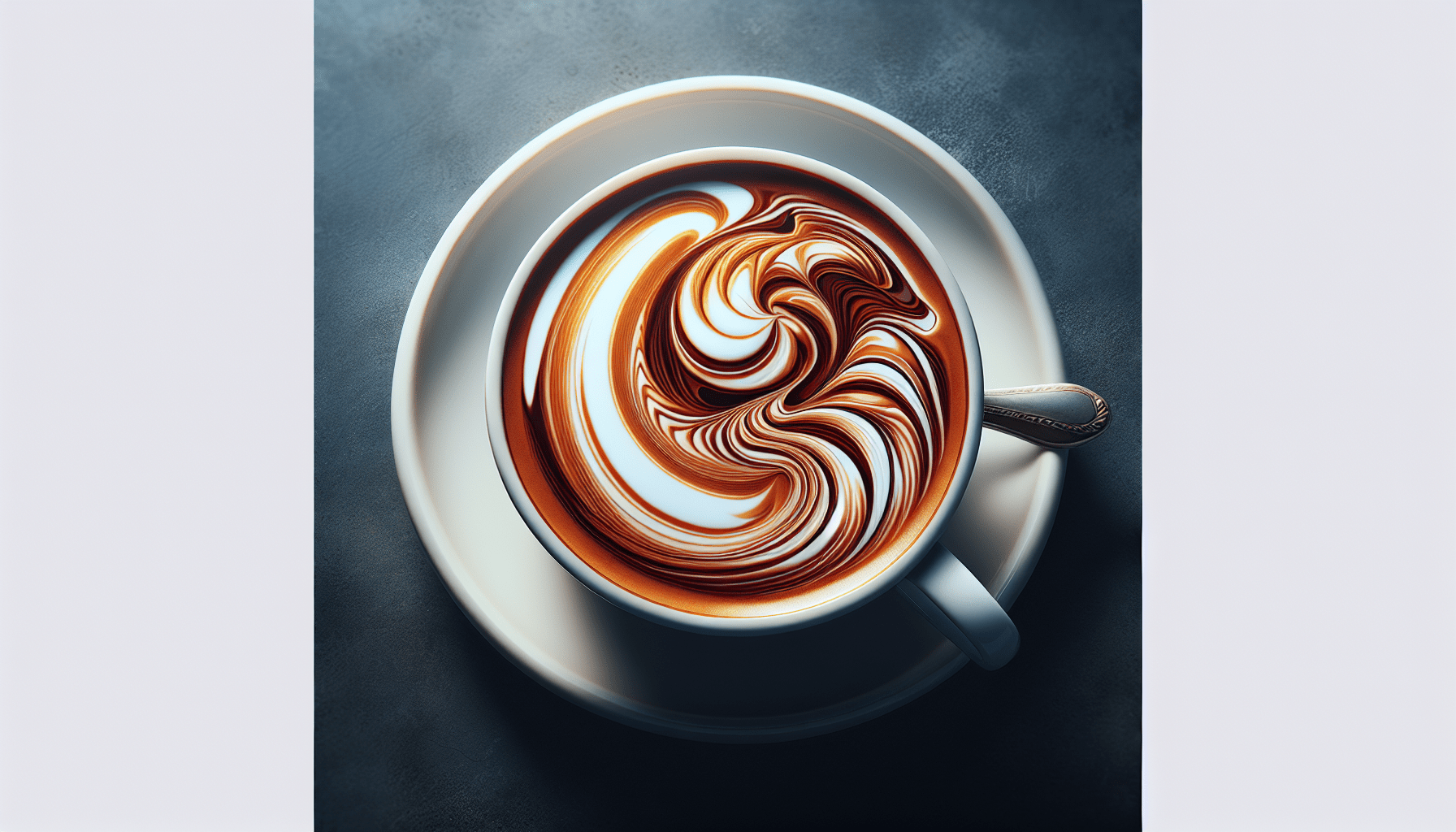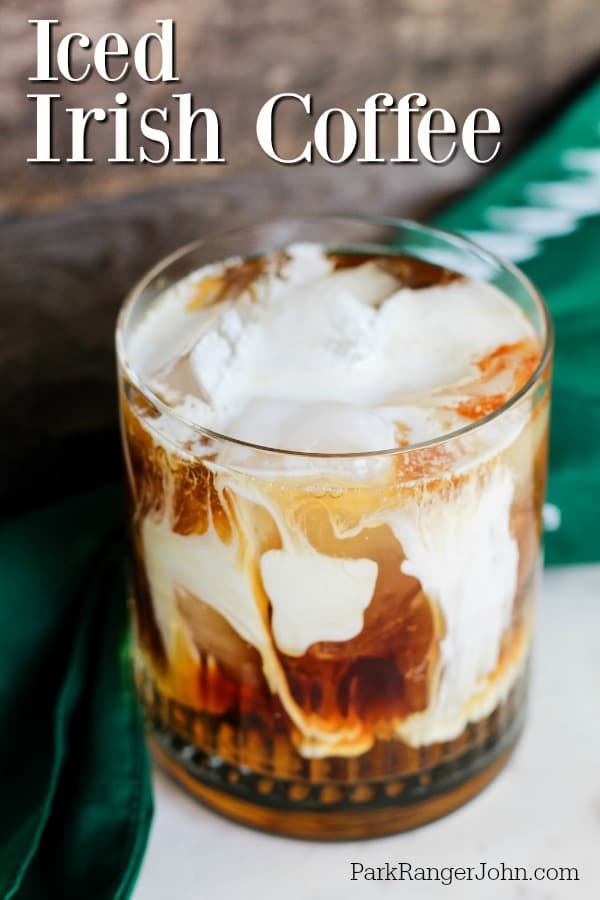As you start your day, imagine sipping on a rich and aromatic cup of Espresso, the perfect companion to kick-start your mornings. With its origins rooted in Italy, this delicious beverage has become a worldwide sensation, captivating coffee lovers with its intense flavor and smooth texture. Whether you prefer it bold and black or infused with a hint of milk, Espresso is sure to awaken your senses and energize you for the day ahead. So, grab your favorite mug and indulge in the delightful experience that is Espresso.
History of Espresso
Espresso, a beloved and highly popular coffee beverage, has a rich and fascinating history. It all began with the invention of the espresso machine, which revolutionized the way coffee was brewed and enjoyed.
Invention of Espresso Machine
The invention of the espresso machine is credited to Angelo Moriondo, an Italian inventor who patented the first machine in 1884. Moriondo’s machine was designed to produce a concentrated coffee quickly and efficiently. However, it was Luigi Bezzera, another Italian inventor, who made significant improvements to the original design in 1901. Bezzera added a pressure system, creating the basis for the modern espresso machine. This breakthrough allowed for the extraction of coffee at a higher pressure, resulting in a richer and more flavorful drink.
Introduction of Espresso in Cafes
Espresso gained popularity in Italy and quickly spread across Europe in the early 20th century. The use of steam pressure in the espresso machine allowed for the rapid brewing of coffee, which made it ideal for cafes and restaurants. This led to the establishment of the first espresso bars, where people could gather and enjoy a freshly brewed espresso. These cafes became cultural hubs and played an essential role in introducing espresso to a wider audience.
Espresso Culture Around the World
In the decades following its introduction, espresso culture spread globally. Different countries and regions embraced espresso in their unique ways, shaping the beverage’s cultural significance. In Italy, espresso remains a daily ritual, enjoyed at cafes and bars throughout the day. In the United States, the rise of specialty coffee shops in the 20th century also contributed to the growth of espresso culture, with an emphasis on quality and craftsmanship. Today, espresso is appreciated and enjoyed worldwide, symbolizing not just a delicious drink, but a way of life.
Benefits of Drinking Espresso
Aside from its delicious taste, espresso offers a range of benefits that contribute to its popularity among coffee enthusiasts.
Increased Alertness and Focus
One of the main benefits of drinking espresso is the increased alertness and focus it provides. The caffeine in espresso stimulates the central nervous system, helping you stay awake and focused. A shot of espresso can quickly lift your energy levels and improve your mental clarity, making it an excellent choice for early mornings or when you need a pick-me-up during the day.
Improved Physical Performance
Espresso has also been shown to enhance physical performance. The caffeine in espresso stimulates the release of adrenaline, which can improve athletic performance and increase stamina. Additionally, drinking espresso before a workout can reduce muscle pain and exertion, allowing you to push yourself further.
Rich in Antioxidants
Coffee, including espresso, is a significant source of antioxidants. These compounds help protect your body against damage from harmful molecules called free radicals. Antioxidants have been linked to a reduced risk of various diseases, including heart disease and certain types of cancer. Enjoying a cup of espresso can provide your body with a healthy dose of these beneficial compounds.
Different Types of Espresso Beverages
Espresso can be enjoyed in various forms, each offering a unique flavor and experience. Here are some of the most popular types of espresso beverages:
Espresso Shot
The classic espresso shot is a concentrated serving of coffee, usually around 1 ounce. It has a rich, bold flavor and is the foundation of many espresso-based drinks. Served in a small cup, an espresso shot is perfect for those who enjoy the pure taste of coffee without any added ingredients.
Cappuccino
Cappuccino is a popular espresso-based drink that combines equal parts espresso, steamed milk, and milk foam. It is typically served in a larger cup and offers a balanced and creamy experience. The layers of espresso, milk, and foam create a visually appealing beverage that is as delightful to look at as it is to drink.
Latte
Latte, short for caffè latte, is a milder and smoother espresso drink. It consists of a shot or two of espresso combined with a larger amount of steamed milk. The milk provides a creamy texture and softens the strong flavor of the espresso. Latte is often topped with a small amount of foam or latte art, adding an aesthetic touch to the drink.
Macchiato
Macchiato means “stained” or “marked” in Italian, and in the context of espresso, it refers to an espresso shot with a small amount of milk. This drink is prepared by “staining” the espresso with a dollop of milk foam. Macchiatos can be enjoyed as is or flavored with syrups like caramel or vanilla.
Americano
An Americano is a popular choice for those looking for a milder coffee experience. It is made by diluting a shot of espresso with hot water, resulting in a drink that resembles drip coffee. Americanos offer a smooth and balanced flavor profile, making them a versatile choice for espresso lovers.
Choosing the Right Espresso Machine
To enjoy espresso at home, investing in a good espresso machine is essential. There are different types of espresso machines available, each offering unique features and capabilities.
Manual Espresso Machines
Manual espresso machines, also known as lever machines, require the user to physically operate the machine to create pressure for brewing espresso. These machines offer precise control over the brewing process but require a steep learning curve and practice to achieve consistent results. They are often favored by coffee enthusiasts who enjoy the hands-on experience of brewing espresso.
Semi-Automatic Espresso Machines
Semi-automatic espresso machines are the most popular choice for home use. These machines automate the water delivery and temperature control, while still allowing the user to control the extraction time and grind size. They strike a balance between convenience and customization, making them suitable for both beginners and more experienced users.
Automatic Espresso Machines
Automatic espresso machines take convenience to the next level. These machines handle the entire brewing process from start to finish, including grinding the beans, tamping, and water delivery. They typically have programmable settings that allow you to adjust the strength and volume of your espresso. Automatic machines are ideal for those who prioritize ease of use and consistency.
Grinding and Brewing Espresso
Proper grinding and brewing techniques play a crucial role in achieving the perfect espresso. Here are some key factors to consider:
Choosing the Right Coffee Beans
The quality of your coffee beans is essential for a flavorful espresso. Look for beans that are specifically labeled for espresso, as they are typically roasted to bring out the best flavors in an espresso shot. Opt for freshly roasted beans whenever possible, as they will have a more vibrant and complex flavor profile.
The Importance of Grind Size
Grind size plays a significant role in the extraction process. For espresso, a fine grind is recommended to ensure optimal extraction of flavors. The grind size affects the flow rate of water through the coffee grounds, and too coarse or too fine of a grind can result in under-extracted or over-extracted espresso. Invest in a good burr grinder to achieve consistent grind sizes for your espresso.
Proper Espresso Brewing Techniques
When brewing espresso, it is important to consider factors such as water temperature, extraction time, and brewing pressure. The water temperature should be around 195-205°F (90-96°C) for optimal extraction. The extraction time, or shot duration, typically ranges from 20-30 seconds, producing a well-balanced shot. The brewing pressure, usually measured in bars, should be consistent and within the recommended range for your specific machine.
Creating Latte Art
Latte art has become a popular and admired skill in the world of espresso. It allows baristas and coffee aficionados to express their creativity and adds an artistic element to the coffee-drinking experience.
History of Latte Art
Latte art originated in Italy but became more prominent in the 1980s and 1990s with the rise of specialty coffee culture. Baristas began experimenting with milk steaming and pouring techniques to create intricate designs on the surface of lattes. Today, latte art is widely practiced and appreciated, with competitions and events dedicated to showcasing the talents of baristas worldwide.
Techniques for Creating Latte Art
Creating latte art requires skill and practice. The key technique is known as “free pouring,” which involves pouring steamed milk into the espresso in a controlled manner to create patterns and designs. Popular pouring techniques include the heart, tulip, and rosetta. Each design requires precise movements and an understanding of milk texture and consistency.
Popular Latte Art Designs
Over the years, a wide range of latte art designs has emerged. Some popular designs include the classic heart shape, the intricate rosetta pattern, the delicate tulip design, and even more elaborate creations like animals and landscapes. Baristas often take inspiration from nature, geometric shapes, and individual creativity to craft unique and visually stunning pieces of latte art.
Espresso Accessories
To enhance your espresso experience, there are a few essential accessories that can elevate your brewing and serving process.
Espresso Tamper
An espresso tamper is a tool used to compress the coffee grounds in the portafilter, ensuring even extraction. It is typically a flat circular piece with a handle, designed to fit the size of your portafilter basket. A good tamper should have a comfortable grip and a weight that allows for consistent tamping pressure.
Milk Frothing Pitcher
When making espresso-based drinks that require steamed milk, a milk frothing pitcher is essential. These pitchers are designed with a spout that allows for controlled pouring of the steamed milk, making it easier to create latte art and achieve desired milk texture. Look for pitchers with a capacity that matches your needs and a comfortable handle for easy maneuverability.
Espresso Shot Glasses
For those who appreciate the visual aspect of espresso, shot glasses can be a useful accessory. Espresso shot glasses allow you to observe the color and crema of the extracted espresso, enhancing your sensory experience. They often feature measurement markings to help gauge the volume of your shots accurately.
Exploring Espresso Blends
Espresso blends are carefully crafted combinations of different coffee beans, creating a balance of flavors and characteristics. Here are two common types of espresso blends:
Single-Origin Espresso
Single-origin espresso is made from coffee beans sourced from a specific geographic region or farm. These beans offer unique flavor profiles that highlight the region’s characteristics. Single-origin espresso provides a chance to experience the distinct nuances and terroir of a particular coffee-growing region.
Blended Espresso
Blended espresso is created by combining different types of coffee beans, often from different regions. Blends aim to achieve a balanced flavor, blending beans with complementary characteristics. Roasters may experiment with different ratios of beans to create a signature flavor profile that suits their preferences and target audience.
Flavored Espresso
Flavored espresso involves adding natural or artificial flavors to the coffee beans before or after the roasting process. Popular flavors include vanilla, caramel, hazelnut, and chocolate. Flavored espresso provides a unique twist to traditional espresso, appealing to those who enjoy a hint of extra flavor in their coffee.
Espresso and Food Pairings
Pairing your espresso with the right food can enhance the flavors and create a delightful culinary experience. Here are a few ideas for espresso and food pairings:
Chocolate Desserts
The rich and complex flavors of espresso complement chocolate desserts perfectly. The bitterness of the coffee balances out the sweetness of chocolate, creating a harmonious palate. Classic pairings include chocolate cake, brownies, and chocolate mousse.
Cheese
Espresso and cheese make a surprisingly delightful combination. The contrasting flavors and textures of the two create a unique sensory experience. Pair a bold and robust espresso with aged cheeses like Parmigiano-Reggiano or match a milder espresso with creamy cheeses like Brie or Gouda.
Nuts
Nuts, such as almonds or hazelnuts, pair exceptionally well with espresso. The nutty flavors and crunchy texture of the nuts complement the rich and robust flavors of the coffee. You can enjoy espresso alongside a handful of roasted nuts or incorporate them into desserts like biscotti or nut-based pastries.
The Art of Espresso Tasting
Just like wine, espresso can be tasted and evaluated for its aroma, flavor notes, and overall quality. Here’s how you can appreciate the art of espresso tasting:
Cupping Espresso
Cupping is a method used to evaluate and compare the flavors and aromas of different coffees. To cup espresso, you need freshly ground coffee, hot water, and cupping bowls or cups. The coffee is steeped in hot water for a specific time, then the aroma and taste are evaluated by smelling and slurping the liquid. Cupping allows you to discern the unique characteristics of different espresso blends or single-origin beans.
Evaluating Aroma and Flavor Notes
When tasting espresso, take a moment to appreciate the aroma before taking a sip. The aroma can provide hints about the flavors you can expect. As you drink the espresso, pay attention to the flavor notes that come through. Look for descriptors such as chocolatey, fruity, nutty, or floral. Evaluating the aroma and flavor notes can help you develop your palate and appreciate the nuances of different espresso profiles.
Developing Your Palate
Developing your palate for espresso tasting takes time and practice. Train your taste buds by regularly trying different espresso blends and single-origin beans. Pay attention to the nuances and try to identify specific flavors or characteristics. As you become more familiar with various espresso profiles, you’ll develop a heightened ability to appreciate and differentiate between different flavor notes and brewing techniques.
In conclusion, espresso is a drink with a rich history, a range of benefits, and a diverse world of flavors and experiences. Whether you prefer the simplicity of a classic espresso shot or the artistry of a beautifully crafted latte, the world of espresso offers something for everyone. By understanding the history, techniques, and accessories associated with espresso, you can elevate your coffee experience and discover the joys of this beloved beverage. So go ahead, savor that rich and aromatic espresso and embrace the wonderful world of espresso culture!




